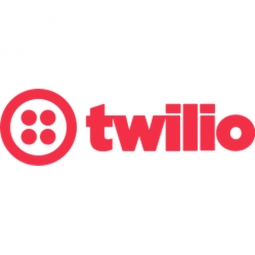技术
- 平台即服务 (PaaS) - 应用开发平台
- 平台即服务 (PaaS) - 设备管理平台
适用行业
- 电子产品
- 电信
适用功能
- 产品研发
用例
- 现场人员安全管理
- 语音识别
服务
- 系统集成
- 测试与认证
关于客户
帕金森语音倡议是一个由数学家和临床医生组成的团队,总部位于马萨诸塞州剑桥。该计划由数学家兼 TED 研究员马克斯·利特尔 (Max Little) 于 2012 年创立,自 2003 年在牛津大学攻读博士学位以来,他一直从数学角度分析人类声音。该计划旨在利用语音记录来检测帕金森病,有可能改善受影响者的治疗管理。该团队开发了一套计算机算法,可以分析录音中的波动、颤抖和其他症状,有效检测与疾病相关的症状的存在。
挑战
帕金森病是一种中枢神经系统退行性疾病,目前影响着大约 600 万人,预计到 2030 年这一数字将增加到近 1000 万人。帕金森病之声计划是一个由数学家和临床医生组成的团队,旨在开发一种低成本测试使用录音识别患有帕金森病症状的患者。面临的挑战是准确记录来自世界各地的电话,分析声音波动、颤抖和其他症状,并将其与帕金森病患者和健康个体的样本集进行比较。该团队需要一个强大的解决方案来处理大量呼叫数据并确保高度的准确性。
解决方案
该团队开发了一套计算机算法,可以分析录音中的症状。他们使用云通信平台 Twilio 来记录和分析帕金森病患者的通话。参与者获得了一个本地 Twilio 电话号码,可以从任何支持语音通话的设备拨打电话。在简短的录音提示后,参与者提交了大约 20-30 秒的稳定“啊”语音录音。 Twilio 将此数据发送到 Parkinson’s Voice 基于 PHP 的可编程平台,该平台收集、分析和存储录音。该计划还将这些语音数据与关注健康的社交网络 PatientLikeMe 提供的自我报告症状数据进行了整理和对比,以验证基于语音记录的症状预测。 Twilio 强大的系统可实现 100% 的捕获率,确保该计划所需的准确性。
运营影响
数量效益

Case Study missing?
Start adding your own!
Register with your work email and create a new case study profile for your business.
相关案例.

Case Study
Remote Temperature Monitoring of Perishable Goods Saves Money
RMONI was facing temperature monitoring challenges in a cold chain business. A cold chain must be established and maintained to ensure goods have been properly refrigerated during every step of the process, making temperature monitoring a critical business function. Manual registration practice can be very costly, labor intensive and prone to mistakes.

Case Study
Cloud Solution for Energy Management Platform-Schneider Electric
Schneider Electric required a cloud solution for its energy management platform to manage high computational operations, which were essential for catering to client requirements. As the business involves storage and analysis of huge amounts of data, the company also needed a convenient and scalable storage solution to facilitate operations efficiently.

Case Study
Leveraging the IoT to Gain a Competitive Edge in International Competition
Many large manufacturers in and outside Japan are competing for larger market share in the same space, expecting a growing demand for projectors in the areas of entertainment, which requires glamor and strong visual performance as well as digital signage that can attract people’s attention. “It is becoming more and more difficult to differentiate ourselves with stand-alone hardware products,” says Kazuyuki Kitagawa, Director of Service & Support at Panasonic AVC Networks. “In order for Panasonic to grow market share and overall business, it is essential for us to develop solutions that deliver significant added value.” Panasonic believes projection failure and quality deterioration should never happen. This is what and has driven them to make their projectors IoT-enabled. More specifically, Panasonic has developed a system that collects data from projectors, visualizes detailed operational statuses, and predicts issues and address them before failure occurs. Their projectors are embedded with a variety of sensors that measure power supply, voltage, video input/ output signals, intake/exhaust air temperatures, cooling fan operations, and light bulb operating time. These sensors have been used to make the projector more intelligent, automatically suspending operation when the temperature rises excessively, and automatically switching light bulbs. Although this was a great first step, Panasonic projectors were still not equipped with any capability to send the data over a network.






